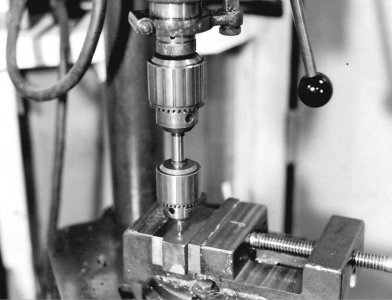Pontiac
True, the electronic part the arduino would work fine. I would hope that I could use one of my existing DRO ports to read this out? At least for my mill head movement. My table doesn't move that way. Might be interesting on a drill press, but that setup I work around very well when I need to move the table. The issue I am looking at is how to attach some sort of accurate encoder between the main support and the head? The gear idea is interesting, but I don't see how one could attach something to the column the would a) not rotate b) be out of the way as I raised and lowered the head? As such, I suspect that is out of the question unless I can come up with some way of accurately etching the entire column? I shutter at the very thought!
I could use something for my rotary table though , and the gear/pulse counter might just work. I would think a bull gear that fit the table and and a hall effect would be fine for that.
b


